WORLD CLASS COACHING
Pep Guardiola Defending
By Luca Bertolini
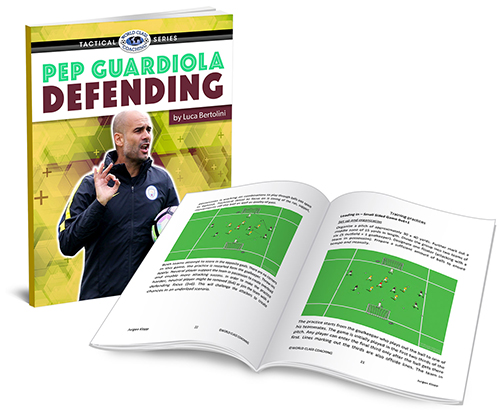
Table of Contents
PART TWO
Transition to Defending and Counter-Pressing
Transition to defend and counter-pressing
These are the main principles of play in transition that Guardiola always tried to carry out on the field since Barcelona and Bayern Munich seasons and they deserve a particular focus, as he thinks that the possession phase must include the positioning for the defense phase and the defending phase must be a preparation for the attacking phase.
• When the possession is lost, the nearest players must apply immediate pressure against the opponents, while the others move toward covering positions.
• When the possession is lost, the 2 closest players to the ball must quickly apply pressure, when possible, and they must cover the new ball carrier, to force a long pass or to recover the second ball.
• The closest player to the ball applies pressure for his teammates to have time to recover balanced positions.
• The closest player to the ball must apply pressure while the team is placed in a zonal defense.
• High density of players in the center, to block the passing lanes and to close the spaces toward the own goal.
• Defense line should be always placed out of the penalty area.
Another one of City’s tactical issues on the pitch was the reaction to losing possession. Not only with a lack of strong pressure on the ball, but also with opened gaps in the middle third, which allowed teams such as Leicester to cut through the lines.
This issue was created by the weak spacing when in possession; when the players are not linked and placed properly, counter-pressing and transitions to defend phases can't be efficient. The weak positional structure makes the counter-pressing poor and fast counter attacks of the opposition easier.
The main issue was found in the middle third, with Silva and De Bruyne having large distances between them and with Touré, not dynamic enough as defender, or Fernandinho, who was often left alone in saving the back line.
City also had issues when pressing during non-transitional phases of play, to effectively close the opponents and being opened while doing, with, again, big distances between the players.
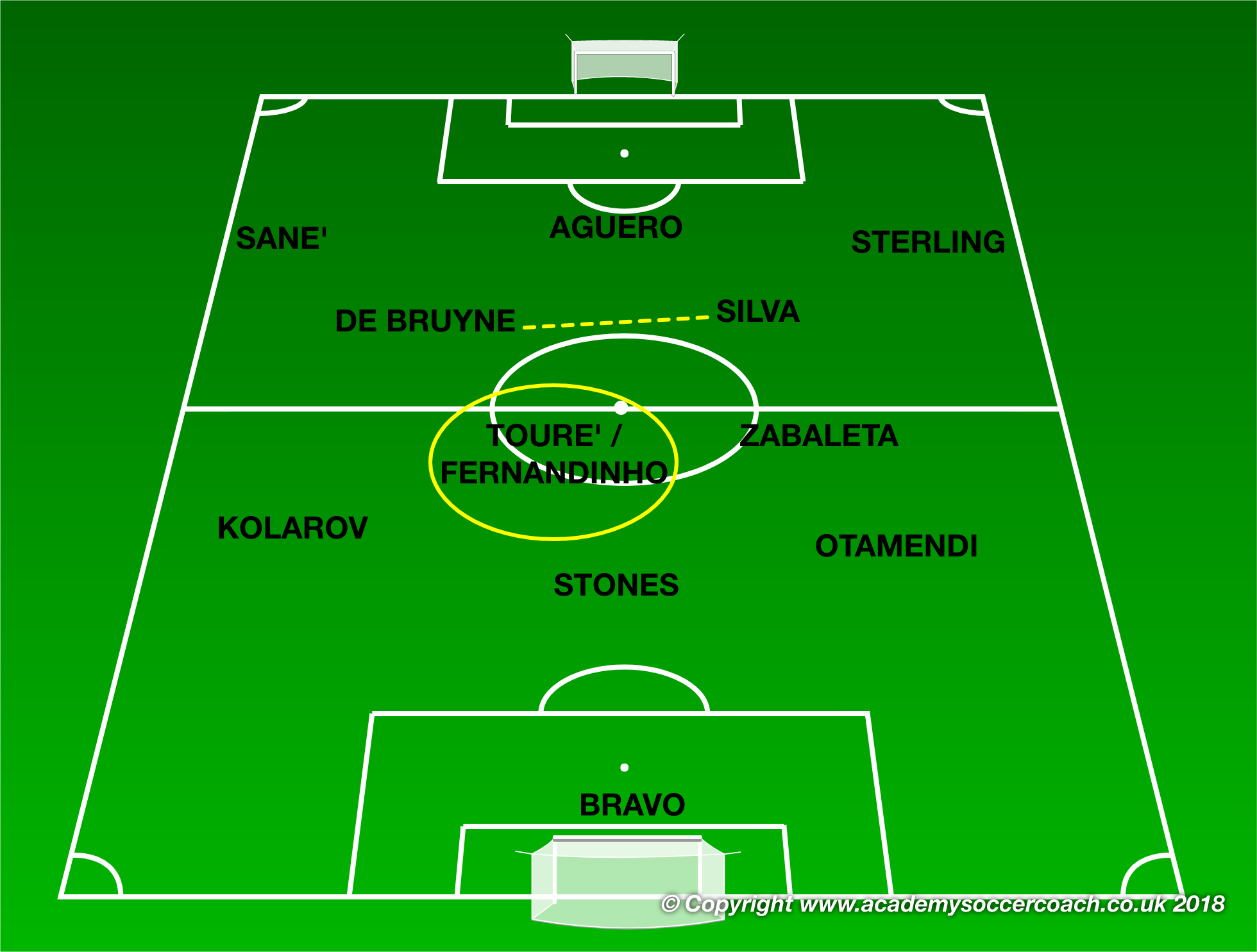
When the forwards tried to put pressure, it was difficult to make the opponent’s build-up phase of play difficult, as an extra space was often available to overcome the pressure, taking advantage of the lack of support from the midfield four (2+2).
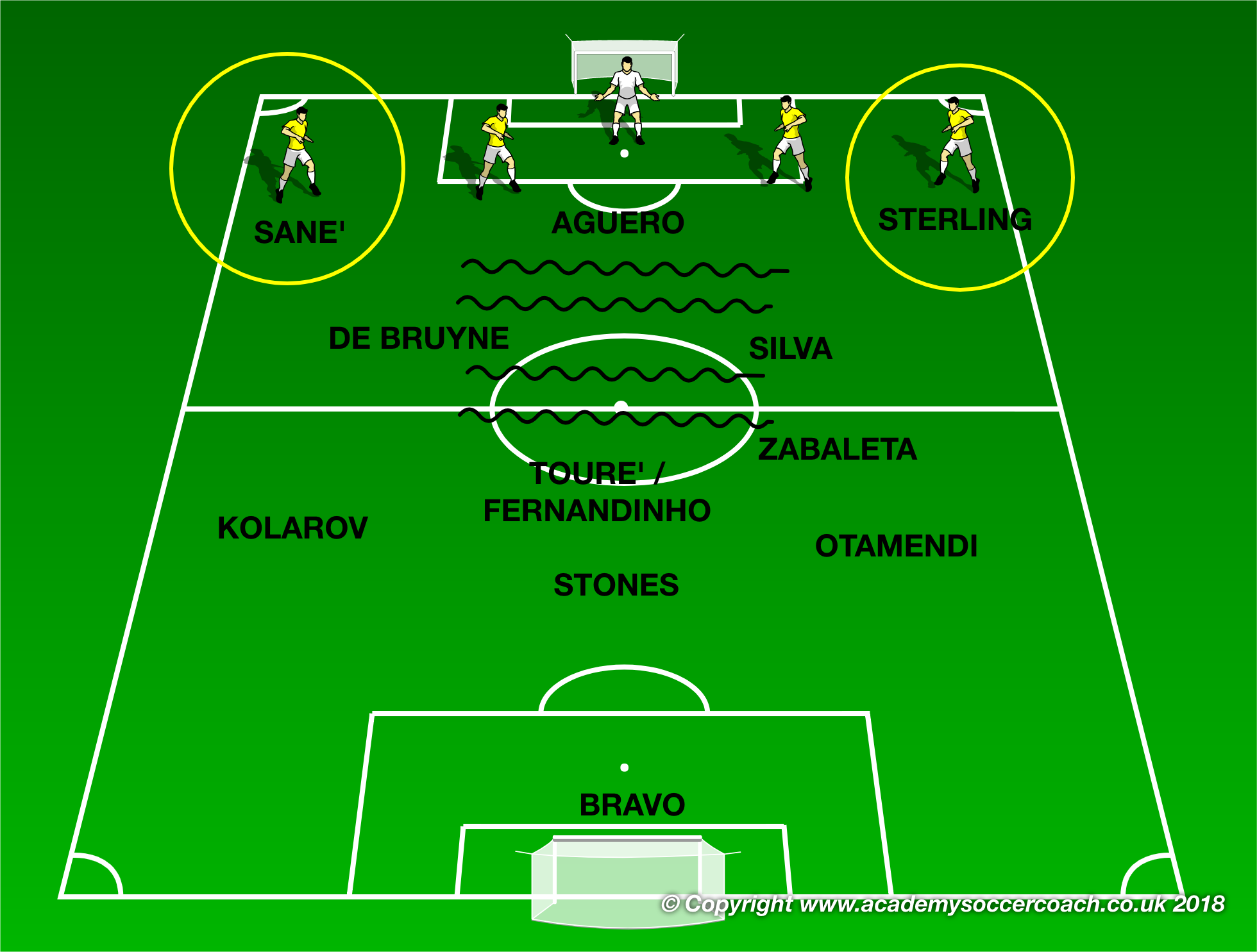
The most common example was perhaps found between the central midfielders and the strikers. Because of Touré and Fernandinho’s deep positioning, they were often far from their higher teammates and the opposition could take advantage of the spaces in between the lines.
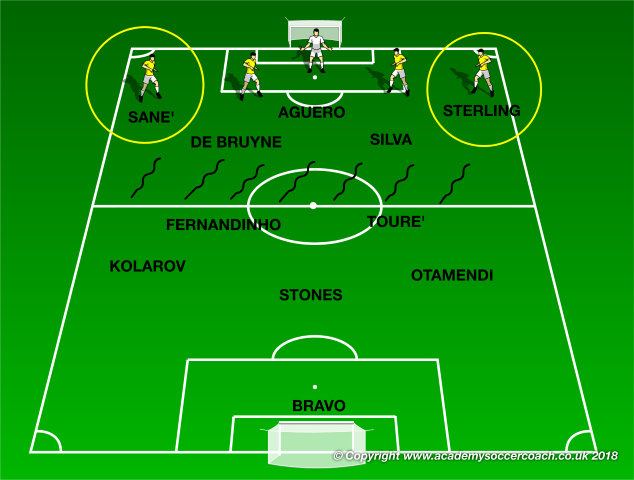
Pressing with an open and stretched shape allowed the opposition to take advantages from a direct passing style of play, even with long balls that are commonly used to counter a pressing defensive system, to overcome the pressure higher up. If the midfield is uncompact, the opposition forwards have more space in which they can receive the ball and play 1 v 1 duels to finish.
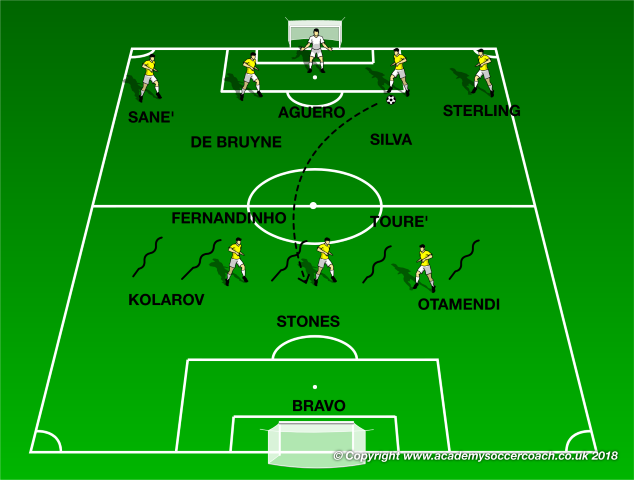
Guardiola’s approach with a lot of possession and ball dominance was not wrong during the first season and even how City played on the basis of the principles, but the defending in the last line and the organization of their games through the midfield were not good enough to counter these long balls also.
And also the choice of the system combined with the player roles did not work properly. The problem was not the strategy but the tactical application of the strategy. Guardiola’s many changes didn't help as well.
During last winning 2017/2018 season, Guardiola gave his team a stronger and clever starting positioning to improve these points of lack. The players were different, better connected and very often in numerical advantage around the ball to put pressure quickly and from many directions against the opposition ball carriers; moreover on the first one after the loss of possession.
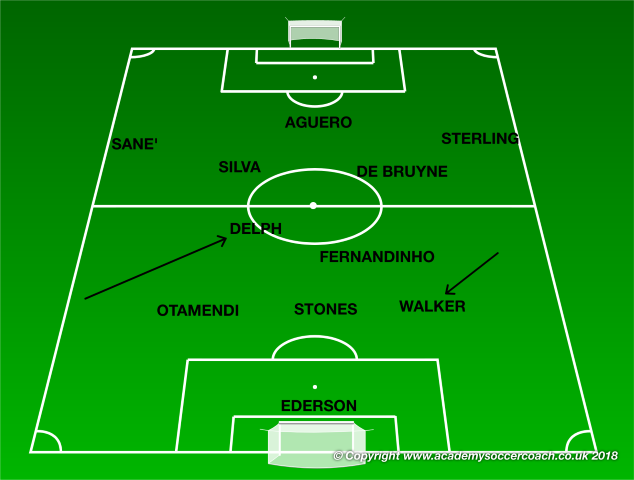
The back three became a fix principle of play and the balance midfielder was always helped by the inverted fullback (Delph and even Mendy when available).
Silva and De Bruyne played as advanced midfielders and they were (and they are yet) the key players during the transition to defend; the 3 forward were always the first to put pressure on the new ball carrier of the opposition, but they had to double the mark and to close the nearest passing lanes.
The reaction speed has been improved also in the second season; pressure and recovery runs made the transition phase to defense much more efficient, avoiding many more counter-attacks of the opposition than in the first season; only Liverpool and his forwards (Salah, Manè and Firmino) were able to beat City 3 times in a row thanks to counter attacking moves.
All the midfielders of the second season were often able to get back into stronger defensive positions, as the inverted fullbacks worked better in condensing the center and because Silva and De Bruyne were able to push the opposition back in case of loss of possession due to their advanced positions when in possession.
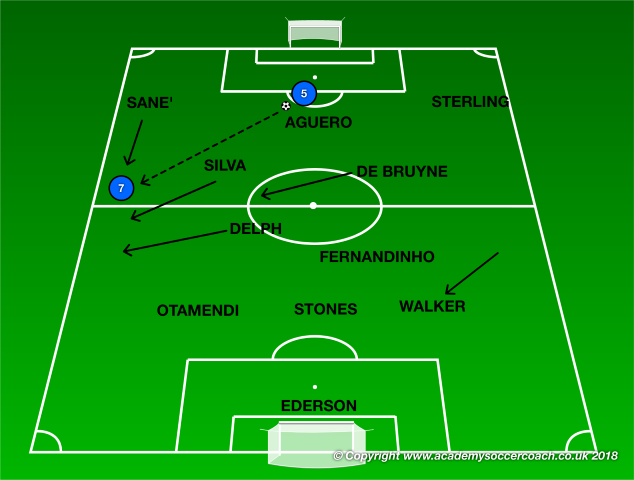
This following picture shows as the Man City was able to reduce the efficiency of the opposition counter attacks, conceding 1 goal every 4 matches; it means that almost all the counter attacking attempts were blocked with or without recovery of the ball.
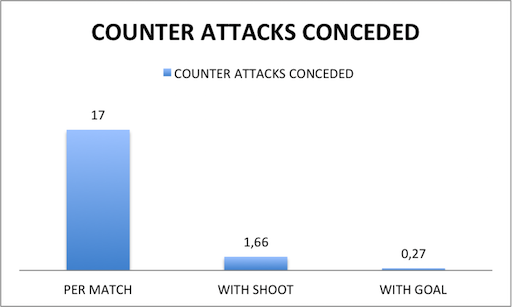
Manchester City is anyway a wider team than Barcelona and Bayern Munich, and even deeper on the field, as long passes are much more used than during La Liga and Bundesliga seasons. Also the distances among the players are larger while building up and during the possession phases. Gundogan has the possession, in the following picture, but he is under pressure; the only close and easy pass option is a back pass toward Fernandinho; to play toward all the other teammates, means to cut an opposition line because of their positions.
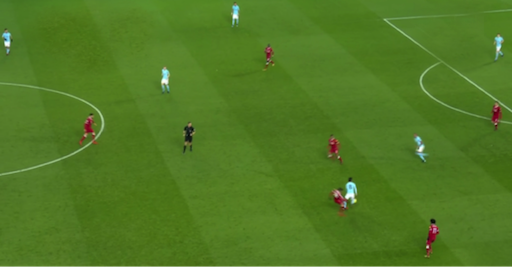
This is a significant difference from Barcelona pattern of play that was used to build up and to play out; and it's much more similar to the Bayern Munich one, that was carried out through Alonso, Lahm and Alaba. The possession structure with short distances among the players, as it has been already stated, should be the key for an immediate counter pressing team action in case of loss of possession; if they are placed wide, the players might be alone against the new ball carrier, in case of loss of possession and without any chance of closure of passing options and pressure.
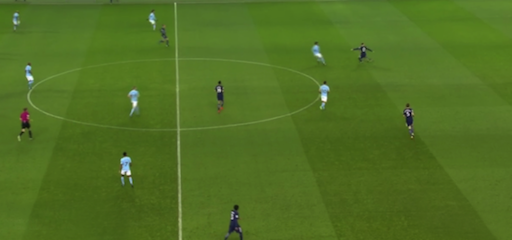
Guardiola fixed the issue of isolation of the players who loses the possession and of all the others on the field behind the ball line, with some easy principles of the forward defensive play:
1) Support players around the ball area; the second defender on the ball must cover the teammates who lost the possession and double the mark if the time allows him. A third player must cover the spaces just out of the ball area or mark the most dangerous opponents.
De Bruyne is on the opposition ball carrier; Gundogan is covering the easiest and nearest passing solution, Walker is placed to cover the flank and Otamendi together with Fernandinho could be able to double the mark on the opposition center forwards.
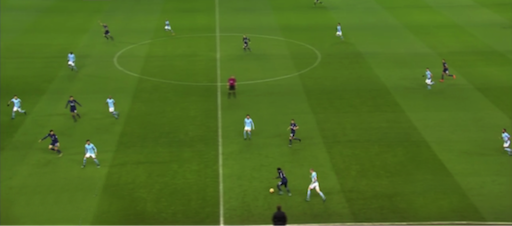
Sterling is involved in a 1v1 defense duel against the opposition ball carrier, Walker is covering the flank and Fernandinho can press the center passing options.
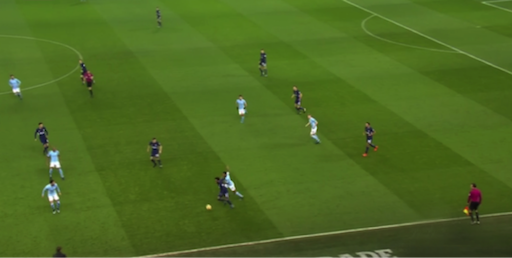
2) The inverted fullbacks congest the center spaces to allow the counter-pressing phase and to avoid oppositions counter attacks inside there. Delph is closing the center left space together with the balance midfielder Fernandinho, who is placed very high on the pitch. The player with the ball can't start any counter attack, as the forward passing lanes are closed.
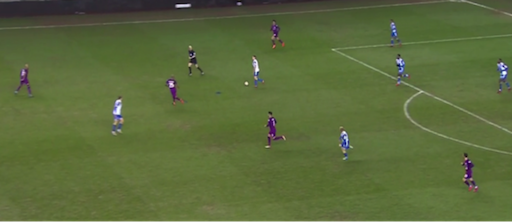
3) The winger near the ball put pressure to either prevent a pass out to the fullback, or to press him as he receives the ball. Sterling is running after the opposition left fullback to press him, as the first attempt of passing lane closure wasn't successful. Bernardo Silva is ready to double the mark on him.
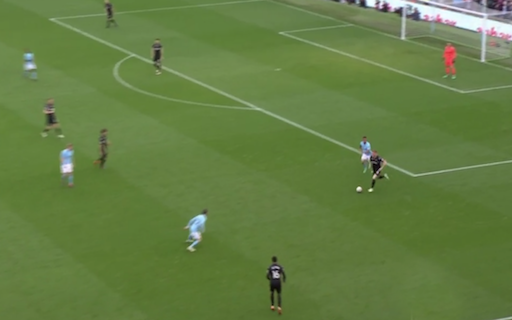
4) High intensity pressure on the new ball carrier of the nearest defending player of the team, usually the player who lost it.


